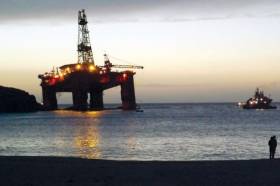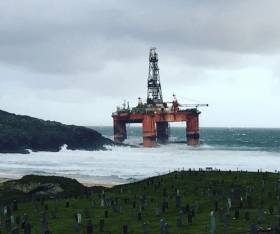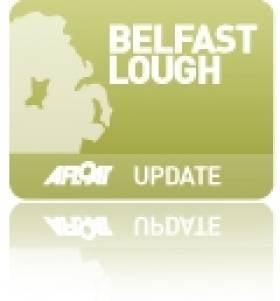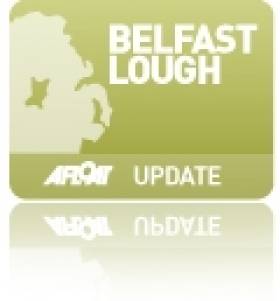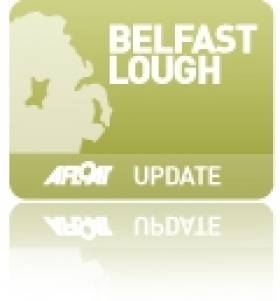Displaying items by tag: Oil Rig
Tugboats Refloat Oil Rig that Grounded Off Isle of Lewis
#OilRig - Tugboats from Smit Salvage have tugged the 17,000-tonne Transocean Winner free during high water levels and will be taken Broad Bay on the Isle of Lewis, Scotland until it can be transported to a repair facility.
Oil Rig Runs Aground In Outer Hebrides
#OilRig - BBC News reports that a 17,000-tonne oil rig has run aground at Scotland's Outer Hebrides after storm-force winds battered the area on Monday (8 August).
The drilling platform Transocean Winner was under tow when it was blown onto the beach at Dalmore in the north of the Isle of Lewis in Scotland's Western Isles, more than 300km north of Malin Head.
No personnel were on board the rig at the time, but due to the presence of significant quantities of diesel on board, the Maritime and Coastguard Agency is keeping watch for any potential pollution hazard.
BBC News has much more on the story HERE.
Byford Dolphin Oil Rig Arrives In Belfast For Refit
#ByfordDolphin - Oil rig Byford Dolphin finally arrived in Belfast for her refit at the weekend, spelling a significant jobs boost for the city's port.
As previously reported on Afloat.ie, the contract to dry-dock and survey the rig – sister to the Blackford Dolphin that the city hosted last year – was announced earlier this month.
Formerly a visitor to Belfast Lough herself for repairs back in 2004, the Byford Dolphin could provide for as many as 1,000 jobs at the Harland & Wolff shipyard, according to the News Letter – which has more on the story HERE.
Giant 360ft Oil Rig Arrives in Belfast from Brazil For Refurbishment
#OilRig- As previously reported a giant offshore drilling platform standing 360ft high has made its way from Brazil to Northern Ireland for maintenance, before being redeployed to the North Sea.
The Belfast Telegraph which has more on this story writes that this is one of the biggest oil rigs ever to be refurbished at Harland & Wolff shipyard and was towed at a snail's pace across the Atlantic to Belfast, taking more than three months to get here.
The shipyard's landmark yellow gantry cranes, Samson and Goliath, have had to be moved along their tracks to the city end of the building dock for the 60-day duration of the refurbishment contract.
Harland & Wolff to Refit Huge Oil Rig is a Christmas Bonus
#Harland&Wolff – Harland & Wolff's landmark iconic cranes are to be relocated due to the refit of a massive oil rig which will act as the city's unofficial Christmas tree, bedecked with lights, as it towers over the harbour estate in a repair deal worth tens of millions of pounds.
The mammoth Blackford Dolphin oil drilling rig, originally built in 1974 in Norway, will be upgraded and repaired in the firm's 556m x 93m main building dock, starting in November for approximately 50 days.
The Aker H-3 rig underwent a major upgrade from 2006 to 2008, when Harland & Wolff designed and built accommodation blocks, power generation module, mud room and additional buoyancy.
For more on this story The Belfast Telegraph reports.


























